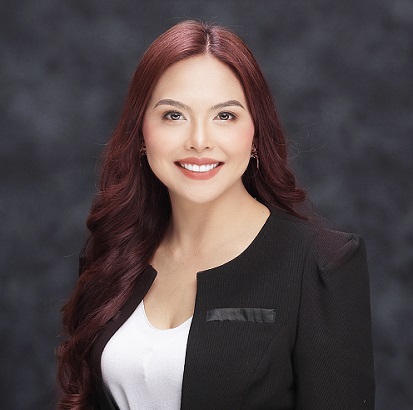The Blooming Business in the Beauty Industry
The beauty industry is comprised of several different elements, from cosmetics, haircare, fragrances, skincare, personal care, and many more. Beauty is no longer targeted only towards females but also males. It is noted that the Global Beauty industry is currently worth approximately $511 billion (with personal care for men to be worth roughly $116 billion). With increasing pressures from more competition from large corporates to niche local companies, all offering a unique service, from vegan, cruelty-free, the ‘must-haves’ reflected by influencers to popular colors and style choices.
The key role of language in the beauty industry is used to define the brand and help sell products to consumers. It is shaped by the very elements that characterize this blooming multi-billion dollar market, one of the few sectors in the global industry landscape with steady growth rates, at least until the current downturn.
The Unique Vernacular of the Beauty Industry
At first glance, it may seem that the beauty industry revolves around the image, but while photo shoots in glossy magazines and TV commercials with Hollywood actresses are undoubtedly an essential component, the quality of language plays a significant role.
Most brands have a unique story, meaning, and voice behind their products so, it is extremely important to assess what your brand needs from the translation perspective. Cosmetic purchases are traditionally driven by emotion, from elegant packaging to beautiful advertising campaigns, but today’s consumers are demanding and well-informed. They are curious to know the ingredients that come with it, while some are eager to learn more and more technical information; this is why right brand messaging is crucial to communicate your unique selling position (USP) and value to your key audiences.
Translation Needs in the World of Beauty:

Translation for the beauty industry covers a wide range of marketing materials, from translating your brand’s message to website content, technical safety information, and legal documentation.
Here are some examples of translations needed for the beauty market:
- Brand messages
- Headlines, taglines, and slogans
- Product labels and packaging
- Marketing and advertising campaign materials
- Subtitles and voiceovers
- Websites and social media content
- SEO content localization and keywords optimization
Brand Message:
A brand’s message is the most powerful marketing tool! Many cosmetic companies spend a lot of time and money developing a single message for their brand – a message that makes them stand out and communicates to their customers who they are, distinguishing them from the competition.
This type of translation requires a lot of creative touches and would usually include localization and transcreation work. Translators working with your brand message need to transcreate the content to make it more engaging and meaningful to ensure that your audience in another region/country feels the same way about the content as the local audience, regardless of their linguistic and cultural background.
Headline, Taglines, and Slogans:
You certainly require transcreation rather than translation when translating your company headline, taglines, or slogans. A transcreation includes translators and copywriters working towards creating content that captures the real meaning rather than a literal translation. When creating content, you may have a slogan that is a play on words, which makes sense to a specific market or audience but not to others. It must be precisely worded to appeal to the predefined target population of consumers and accurately represent the brand’s image.
Labeling and Packaging:
Both are important parts of product translations. Label translations that translate product ingredients require research into the content of the products. For general accuracy and specific legal requirements, label translations go through a rigorous QA process in order to meet the translation quality standards for this type of content. Informing buyers about any ingredients that may cause allergic reactions is just one reason why accuracy and clarity are so important with label and packaging translations.
Marketing and Advertising Campaign Materials:
Providing compelling and accurate content is key for a company’s marketing materials. It can be anything from your brand brochures, product catalogs, instruction manuals, press releases, newsletters, etc. This type of content may need a transcreation rather than a straight translation. It should be completed by native-speaking translators and copywriters to ensure the brand communicates the right message. The translation service providers specializing in this field must have a thorough understanding of cosmetic chemistry and use tools such as translation memory and a glossary of terminology to recreate a specific message that is consistent, comprehensive, compelling, and culturally correct.
Subtitles and Voiceovers Translations for Videos:
Beauty companies may have an array of multimedia content that can be localized into many languages and can either require subtitles on the original video or a voiceover. Instructional videos for cosmetics and health care products are a very common and effective means of promoting beauty products and practices.
Website Translations:
Translating your website content into various languages and for multiple locales is the surest way to expand your client base. Consumers will be able to research and buy your products directly no matter where they reside. Most consumers feel more comfortable buying products in their local language, therefore having your website and product pages translated will aid the consumer process and brand awareness.
SEO Localization and Keywords Optimization:
Translating and localizing keywords found in your website and pay-per-click campaigns helps achieve higher search engine rankings in country-specific search engines. This ensures new customers in new country markets can find your products and services.
Conclusion
Like many consumer products, the beauty industry exists in a fiercely competitive environment that we all know. While beauty products have always sold well, the rise of social media influencers has propelled cosmetics, especially skincare products, into the spotlight. Translations for the cosmetics sector are essential to convey the emotions associated with your line. It is important to have translations on your products and branding, as it allows larger market access and therefore higher success in brand awareness and thus profit.
References:
